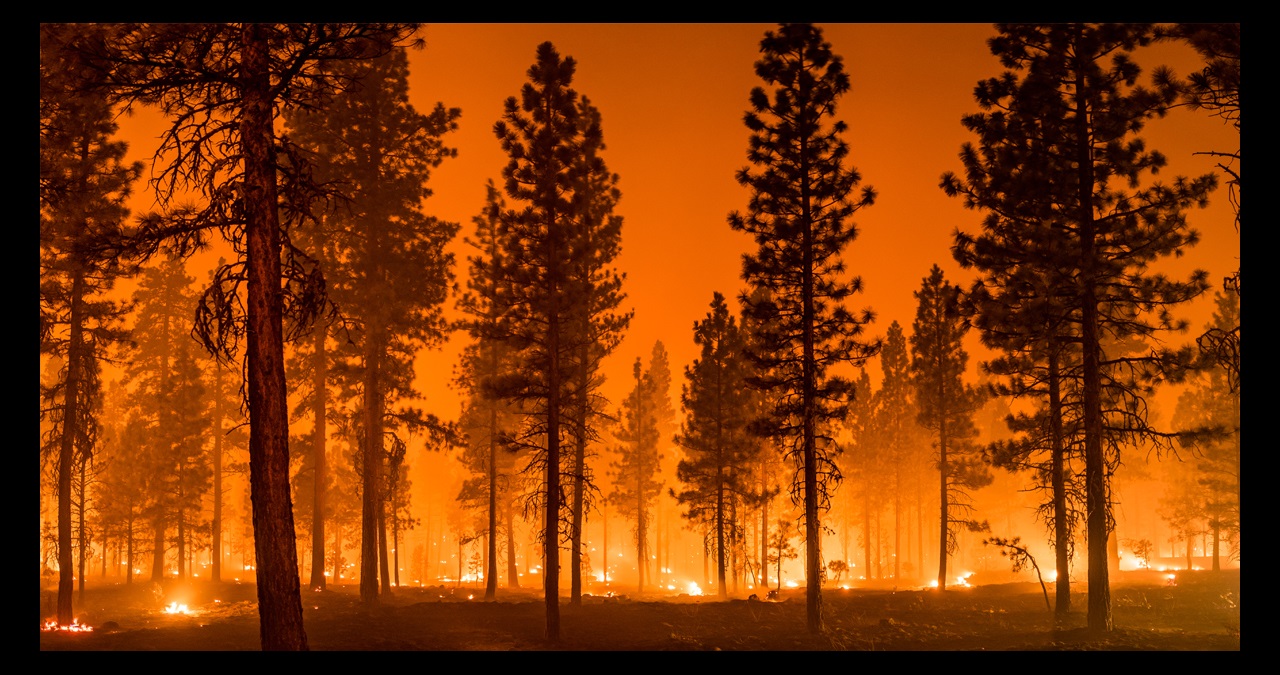
In the arid mountain west amid ongoing drought, wildfire season doesn't let up, even during a COVID-19 surge.
Since joining Carson Valley Medical Center as chief executive officer in June 2018, I have been through multiple wildfire threats to our area. My experience and training as a veteran U.S. Navy Hospital Corpsman prepared me to lead and support my team through a challenging time while finding creative ways to continue hospital operations.
Carson Valley Medical Center is a 23-bed, critical access hospital in Douglas County, Nevada, located 20 minutes east of Lake Tahoe and 40 minutes south of Reno. During the summer of 2021 we faced a series of regional and national crises that, particularly during an ongoing pandemic, tested the limits of our emergency response preparedness.
As the Tamarack Fire, which started July 4, barreled through the Sierra Nevada toward U.S. Highway 395, closing in on Topaz Ranch Estates in southern Douglas County, we evacuated our rural health clinic there. At the same time, many of our clinic and hospital staff members were forced to evacuate the fast-moving fire as it threatened their homes.
The massive Caldor Fire began a little more than a month later, Aug. 14, near Placerville, Calif., while the Tamarack Fire was still burning. Couple this with a COVID-19 surge of 450 patients between July and October, and we transitioned to treating the three separate events as one large emergency incident.
Our medical staff had to leave their shifts to help their families evacuate. We backfilled with colleagues who not only volunteered to cover additional shifts but offered up their homes as well. After evacuating, many displaced staff members came back to work. However, their minds were understandably elsewhere.
We offered our parking lots and open areas for employees to park trailers and RVs they owned, which some employees were able to stay in, and assisted with hotel fees. Evacuating meant our employees were displaced and possibly not in the area, so those who didn’t need to evacuate volunteered to cover shifts. Because of the long duration of the incident, nursing volunteers evolved into a nursing on-call staff.
Due to the evacuation of the city of South Lake Tahoe as a result of the Caldor Fire, our sister hospital, Barton Memorial, evacuated patients and staff to our facility, and we were unable to transfer patients to other regional medical facilities as they were burdened by the fires and evacuations as well. Patients requiring a higher level of care were transported to hospitals in southern Nevada, Utah, California and Washington.
As multiple large fires raged in the West and the Caldor Fire burned its way toward South Lake Tahoe, the air quality was severely degraded as smoke settled into the region. Transportation and delivery corridors between Nevada and California were disrupted, and we experienced medical supply chain interruptions on top of everything else.
To expand our inpatient care ability, we opened our phase two surgery recovery room to house additional patients, and we redeployed OR nursing staff to observe patients.
Throughout the layers of trials we experienced last summer and fall, we learned the strongest assets in our toolbox were twofold:
- Understanding and empathizing with the extreme duress our staff was experiencing across our six locations, and making sure they had access to the behavioral health support they needed.
- Continuity of communicating with our external partners and local emergency responders, and our employees.
Communication was critical throughout the event, and at a time when power outages or internet loss could occur, the strength of our external communication was put to the test. We realized we needed strong landline connections and walkie talkies that could reach long distances. Our communications team partnered with the incident command team to issue a regular briefing about the current situation, and any protocols or updated processes that evolved as a result of the incident. We channeled all communications through incident command, a formal structure that helps to retain consistent and reliable messaging.
We also focused on connecting and communicating with our most important resource: our employees. In addition to regular email updates, we used our electronic mass notification system, InformaCast, to relay messages to our staff via their cell phones so they would receive timely updates no matter where they were.
In a community as small as ours, no one was exempt from the effects of the emergency. Whether our employees were directly affected by a sick loved one or had to evacuate themselves, everyone knew someone who was touched by tragedy. Knowing this could affect their work relationships or job performance, our team had to lead with empathy to ensure we were able to work with folks who were distracted and having a hard time coping.
My experience in the military trained me to work with resources that are available, think outside the box and get creative for medical and logistical solutions, and to be calm in a life-and-death situation. The lessons learned from 2021 have made our organization stronger, and I couldn’t be prouder of the CVMC team.
Jeff Prater, MHA, FACHE, is CEO, Carson Valley Medical Center.
